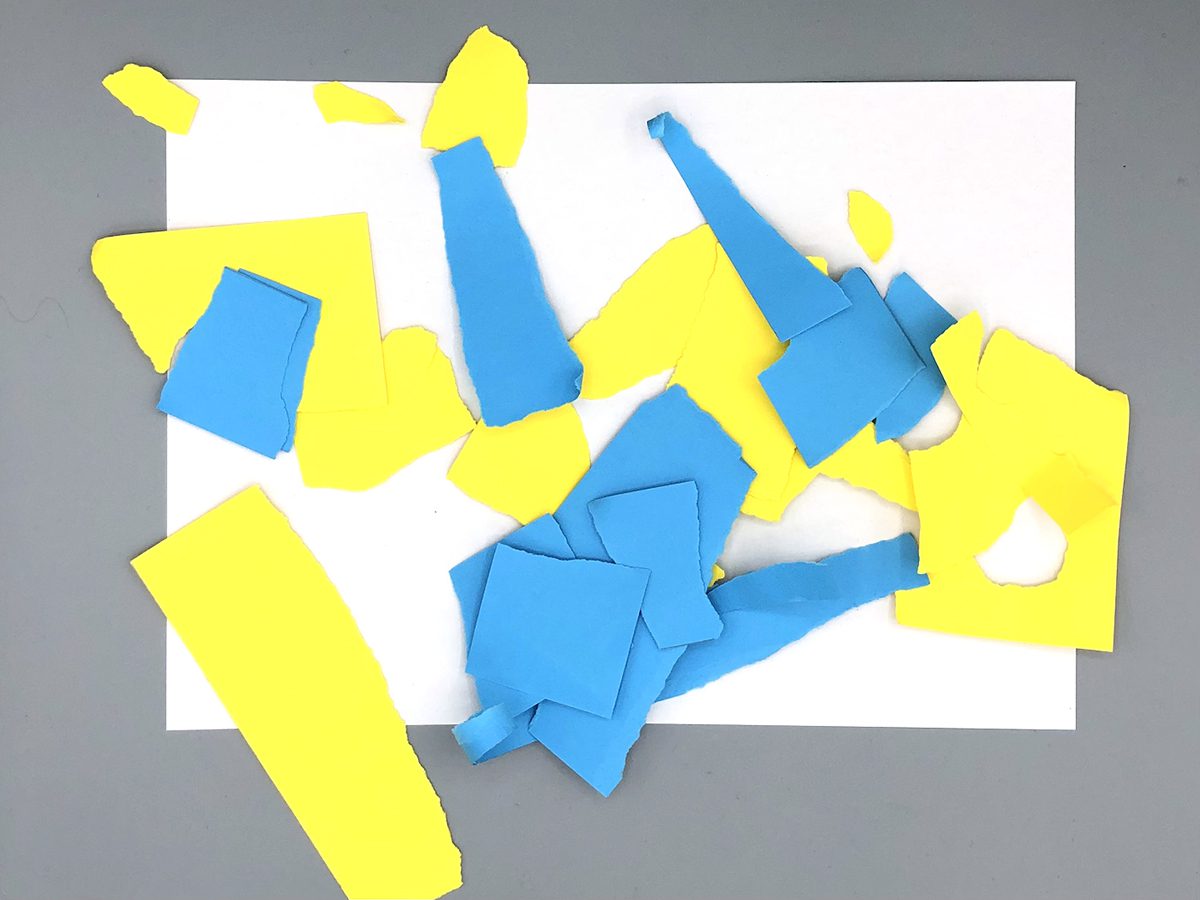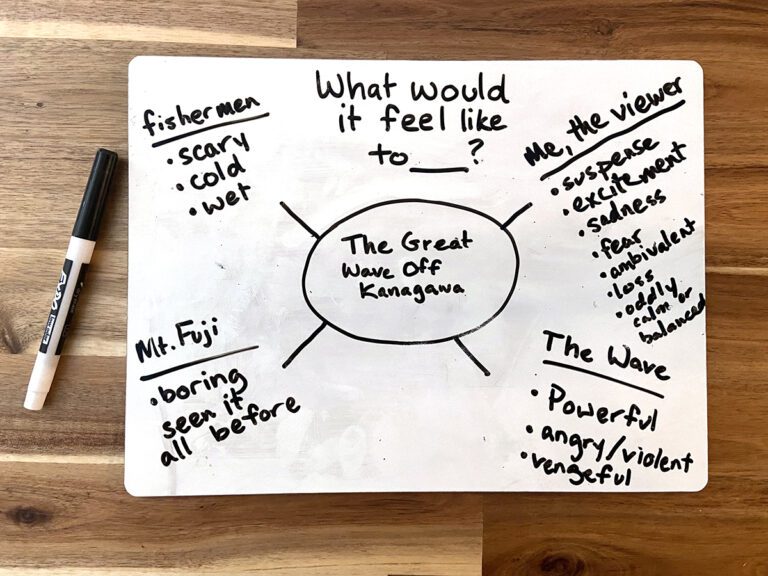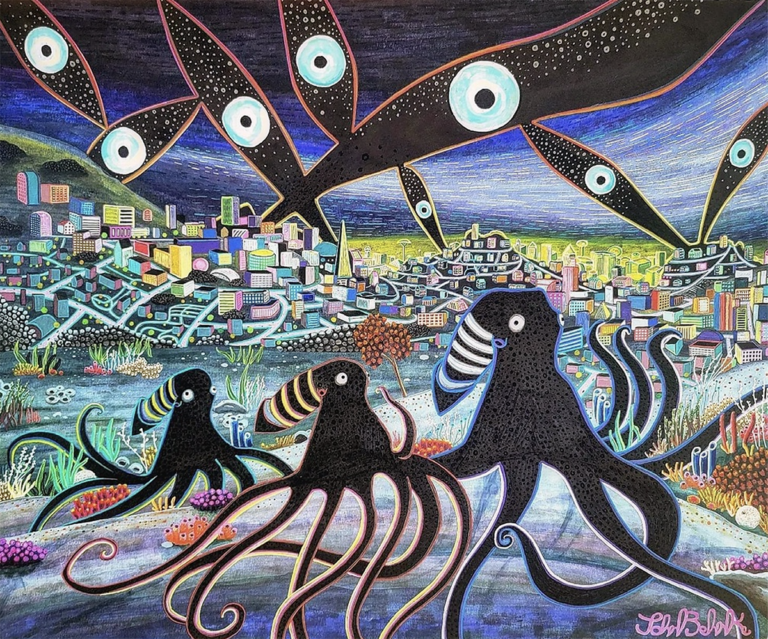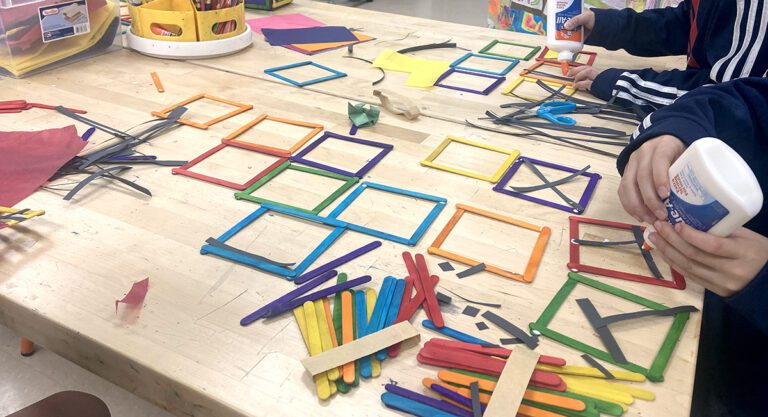René Magritte, Méret Oppenheim, Salvador Dalí, and Max Ernst. You have probably stumbled across a few of these famous Surrealist names before. These visual artists were part of a cultural movement developed in Europe after the devastation of World War I in 1924. Writers, actors, filmmakers, photographers, collage artists, and painters built upon the preceding Dada art movement with input from poet André Breton. Unpacking the terror and harsh realities of war, these founding Surrealists desired to tap into their subconsciousness.
The Surrealists developed a series of techniques, strategies, and games to awaken a dream world. Also known as Surrealist parlour games, the goals of these activities were to generate surprise, absurdity, humor, and unexpected juxtapositions. The Surrealists hoped to shake off rational thought as a reprieve from the difficulties of their post-war society.
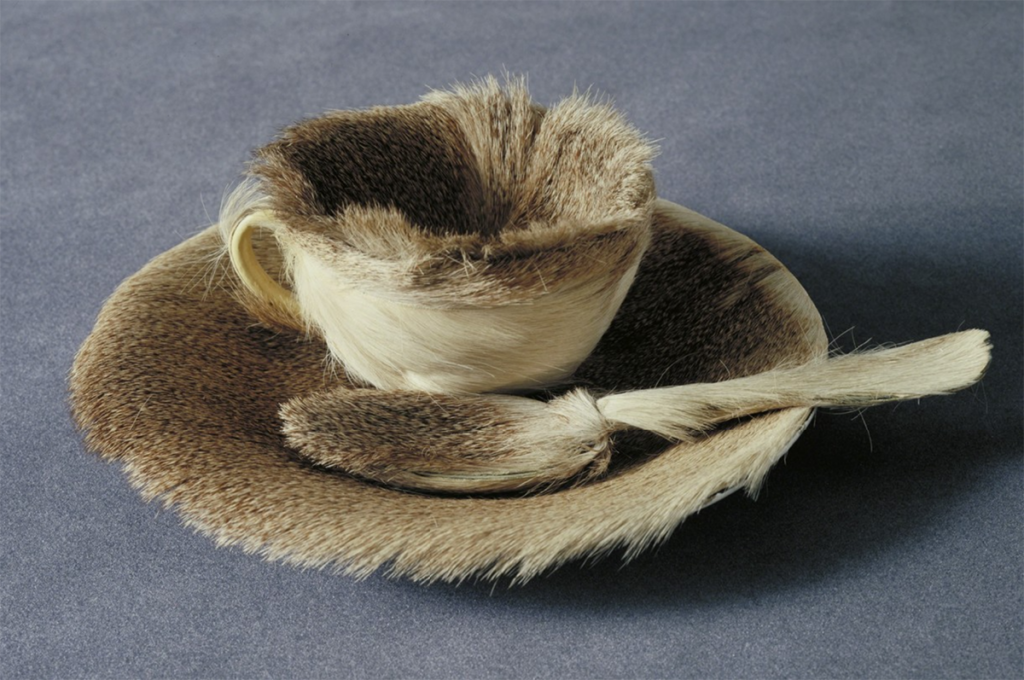
Give your students brain breaks and make Surrealist games a part of your art curriculum.
Gamification and game-based learning are hot words in educational circles today. When used with external rewards like prizes and treats, gaming techniques fall flat. Yet, game-based learning can inspire students and build internal motivation towards goals and objectives when executed as a learning tool.
You might ask yourself, “What kind of goals would Surrealist games and activities connect with?” You can use Surrealist games in conjunction with idea development at the start of a unit. In addition, these games scaffold nicely to help students examine their everyday worlds. Also, Surrealist games work well as transitional elements between units of learning. They also generate a sense of play and openness to new ways of thinking.
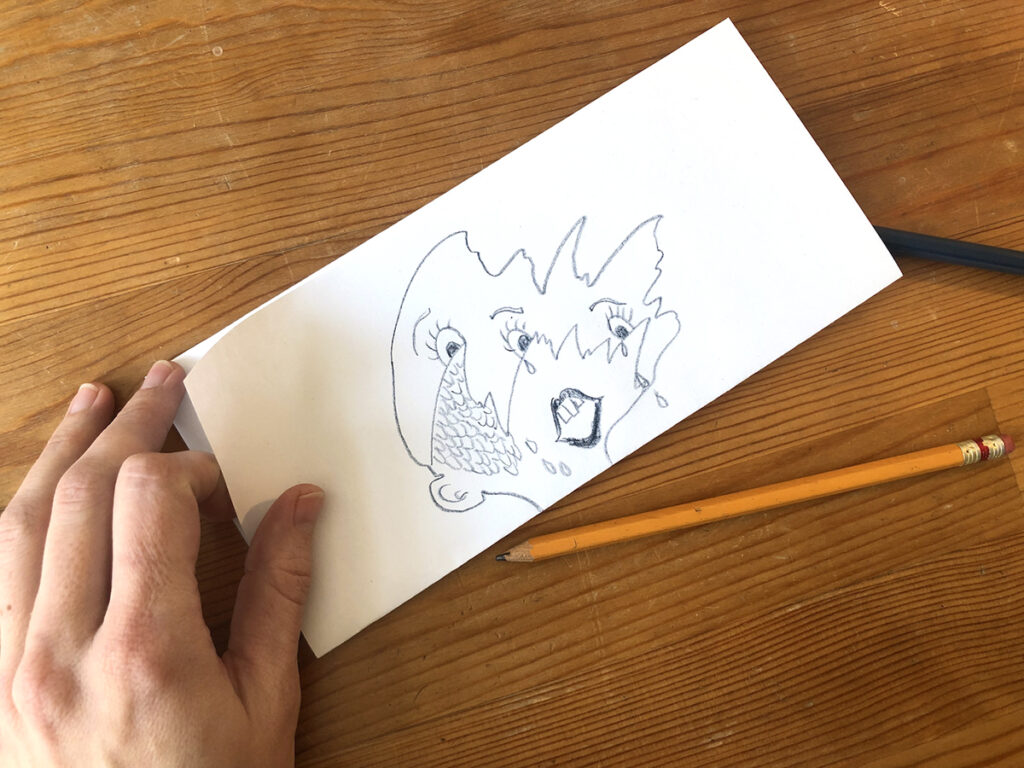
Alistair Brotchie presents over 55 activities in his 1995 compilation, A Book of Surrealist Games. Language activities, visual techniques, a variety of provocations, and lines of inquiry make up the contents of the games in this delightful text. In this article, let’s look at five games to play with students of any age.
5 Visionary Surrealism Games
Here are five Surrealist games, described step-by-step with example images and further resources to consider. We will explore the Exquisite Corpse, Automatic Drawing, Frottage, Decalcomania, and Torn Paper Collages.
1. Exquisite Corpse
Exquisite Corpse (Cadavre Exquis) is the best-known Surrealist game. It’s played in art classes at the college level to general education elementary classes and summer camps. You will find numerous resources to support this activity, like Nancy Walkup’s 2017 A Studio Lesson Based on Exquisite Corpse. This game will inspire giggles, but it also relies upon peer cooperation and a spirit of secrecy.
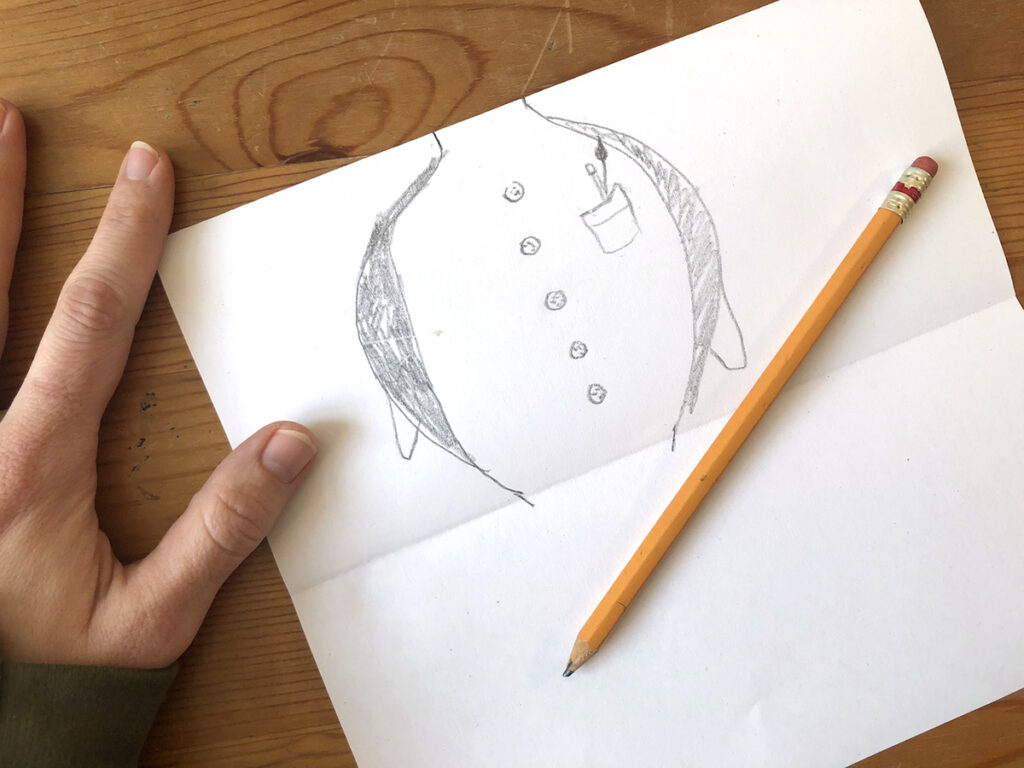
Suggested Materials: Pen and paper
Suggested Grade Levels: Grade 1 and up
Procedures and Tips:
- Guide your students to hold their paper vertically and fold the paper into three equal sections.
- Keep the paper folded and start with the top section.
- Set a time limit of 3 to 5 minutes.
- Draw the “head” of a creature.
Prompts: What is the wildest head you can imagine? Reconsider proportions, (a)symmetry, or adding/subtracting facial features.
Extension: Develop fun details such as hair, feathers, scales, jewelry, etc. - Tuck the drawing inside the folded paper so only the middle part is visible.
- Pass the drawing with two or three passes.
Reminder: No peeking! It ruins the surprise element of the game. - Restart the timer.
- Using the lines from the neck, draw the “torso.”
Prompt: Consider adding clothing, arms, fins, wings, or textures. - Pass the page again with two or three further passes.
- Restart the timer.
- Draw the “mode of transportation.”
Prompt: This can be a set of legs, fins, tentacles, wheels, etc. - Altogether, unfold papers all at once.
Extension: Adjust the contour of the creature’s body as needed. - Reflect: Participate in a gallery walk with a lot of laughs!
Applications:
Exquisite Corpse works well as an ice breaker at the start of the year. It can also be a meaningful hook into the art history of Surrealism. In addition, use this game as a warm-up for portraiture, figure drawing, illustration, or fantasy creature designs. The humorous element of Exquisite Corpse offers participants a chance to decompress.
2. Automatic Drawing
Automatic Drawing is defined as “expressing the subconscious.” Automatic Drawing asks participants to draw without thinking. To the untrained eye, the result may resemble a series of scribbles. Artists like Pablo Picasso used this tool to make figurative drawings, and the French-Canadian group, Les Automatistes, worked abstractly. You can see the influences of these ideas in several artists’ works, from Joan Miró to Joan Mitchell.
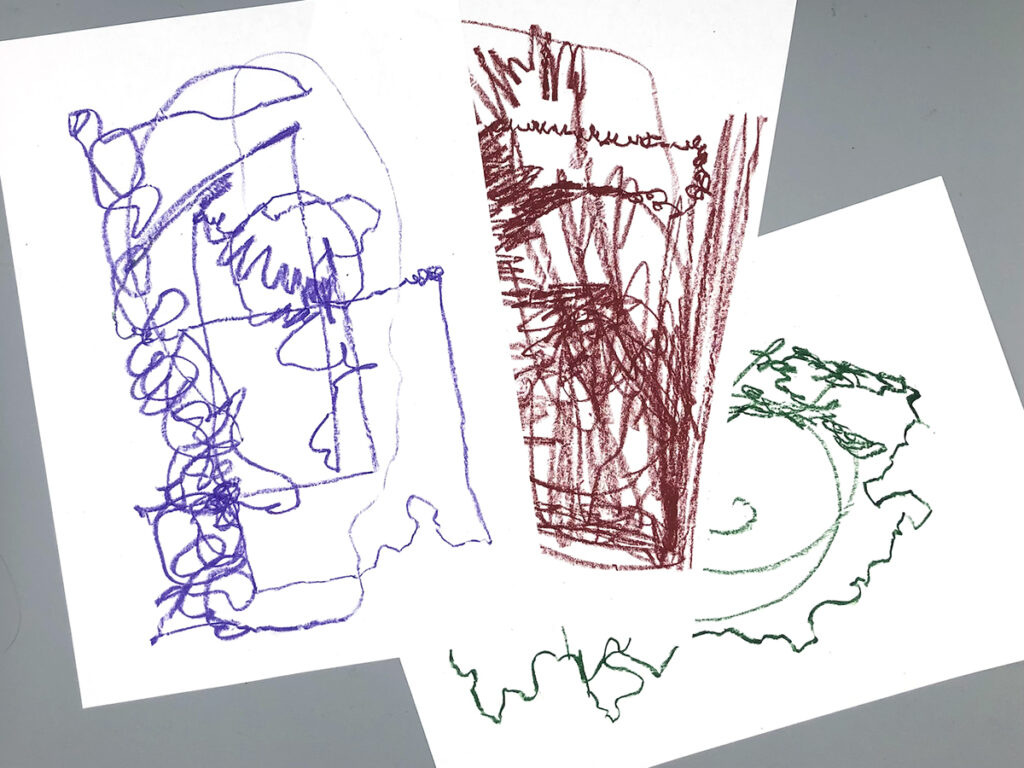
Suggested Materials: Various drawing materials and a few sheets of paper per student
Suggested Grade Levels: All
Procedures and Tips:
- Queue up different instrumental songs (calm, fast, slow, and dramatic).
- Turn the lights down and relax!
- Start and stop drawing according to the music. Keep the drawing utensil in contact with the paper to create a continuous line drawing.
- GO! Listen to the music play for 1 to 2 minutes.
Prompts: Go with the flow, don’t overthink, and try closing your eyes. - STOP! Flip the page or grab a new piece of paper.
- GO! STOP! Repeat the process for at least three different pieces of music. You can also try it without music.
- Reflect: Look at the different drawings.
Prompts: What do you see? How did it feel to draw without a goal in mind?
Applications:
Automatic Drawing is a form of both doodling and mark making. It is a beautiful game for breaking out of a mold or as a warm-up. The unexpected images that appear can be used as a starting point for further work, play, or both. Your students may enjoy the way artist Tim Gula utilizes Automatic Drawing as a form of play, meditation, and relaxation to prepare for more detailed work.
3. Frottage
Make a Frottage by creating a texture rubbing on paper with materials such as wax crayons, graphite sticks, or charcoal. Frottage asks participants to look for images within the collected textures, keeping the unexpected element in mind. Similar to looking for shapes, objects, and animals in the clouds, expand your imagination and look for hidden surprises in Frottage.
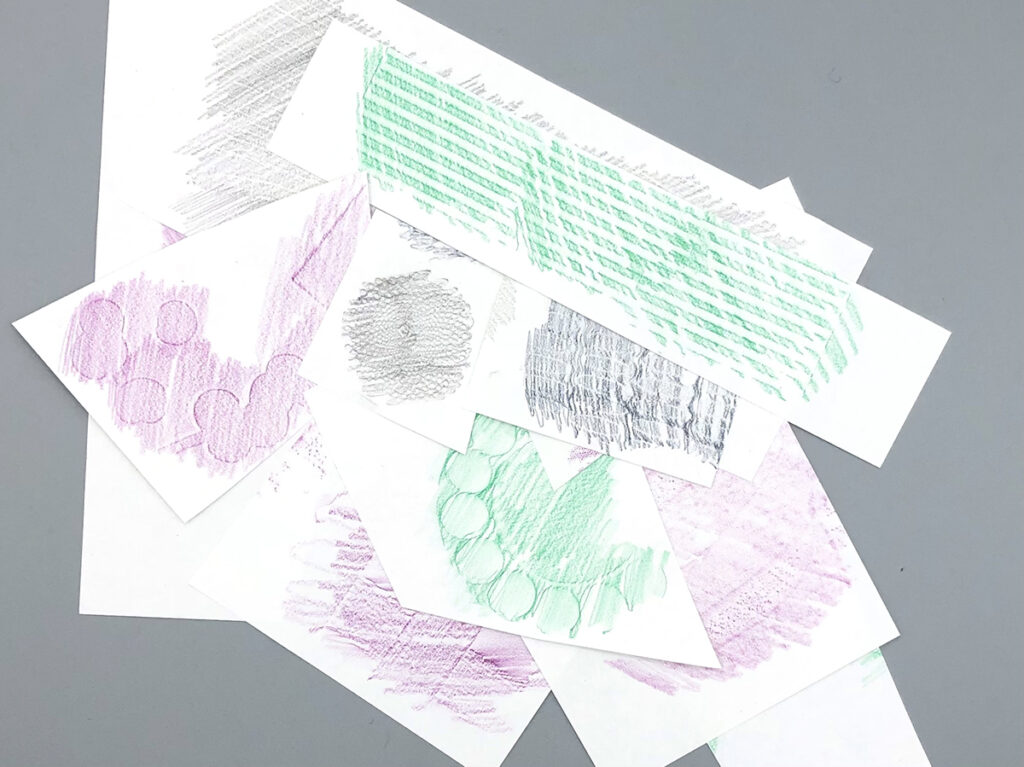
Suggested Materials: Soft drawing materials and light-weight paper
Suggested Grade Levels: All
Procedures and Tips:
- Find as many textures as possible within an established time frame of 5 to 8 minutes.
Prompts: Look for alternative textures all around you. Consider clothing, the floor, a scratched desk, book covers, etc.
Optional: Go outside or in the hallway to search for more textures. - Set a timer.
- Rub the side of a crayon or other drawing tool to capture the texture of a surface.
- Reflect: Look at the collection of Frottages.
Prompts: What textures did you discover? Did you find any surprises?
Applications:
Students can use their Frottage remnants as the basis for future work or inclusion in a collage. Frottage is also a fantastic tool to awaken students to the surfaces surrounding them in their everyday lives and develop their understanding of texture.
4. Decalcomania
The Surrealists used Decalcomania as a way to create imagery by chance. At first, the resulting image might resemble an organic blob. However, with an interpretative lens, one can look for recognizable elements to develop into something new. As Magritte says, “Everything we see hides another thing, we always want to see what is hidden by what we see.”
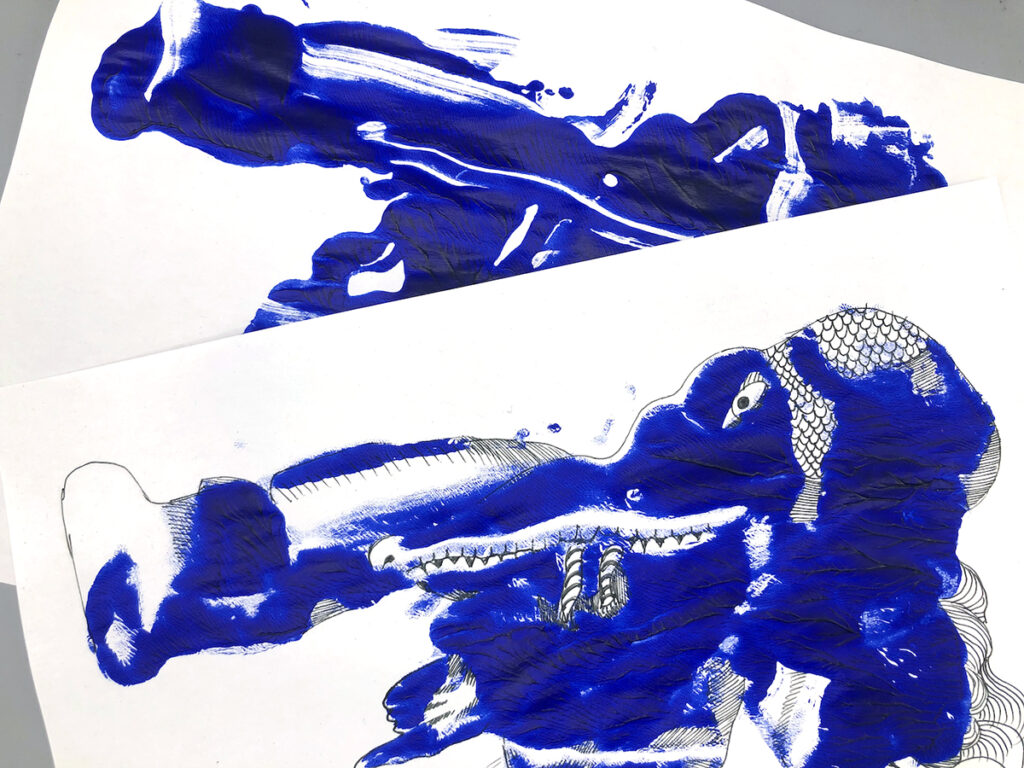
Suggested Materials: Wet media, a palette knife or spatula, a substrate (like plexiglass, tinfoil, or wax paper), pen or pencil, and paper
Suggested Grade Levels: Upper elementary and up (This can be modified with more teacher preparation for younger students.)
Procedures and Tips:
- Spread a wet medium on a substrate so it won’t dry too quickly or be too thick.
- Press a piece of paper into the wet medium. Pull a ghost print, too.
- Set aside to dry for 5 to 10 minutes.
- Reflect: Look at the prints from multiple angles.
Prompts: What do you see? Turn it upside down! Look for small details. Do you see a part of a whole? Maybe you see more than one thing? - Use drawing materials to highlight the hidden picture(s).
Applications:
Decalcomania will bring your students into a creative headspace where “nothing” can become “something.” This game works well as a brain break from a challenging task. Or, you can use this game to tie into a unit on the imagination, narrative art, or character design. Finally, this simple game works as a beautiful entry point into printmaking.
5. Torn Paper Collages
This final game, Torn Paper Collage, also called Papier Déchiré, was piloted by Jean Arp in the transition from Dada to Surrealism. Colored paper is torn up and thrown into the air. The pieces fall randomly upon a page. Like with Decalcomania and Frottage, students can further explore the fallen pieces of paper to develop an intricate artwork or leave the pieces as an abstract composition.
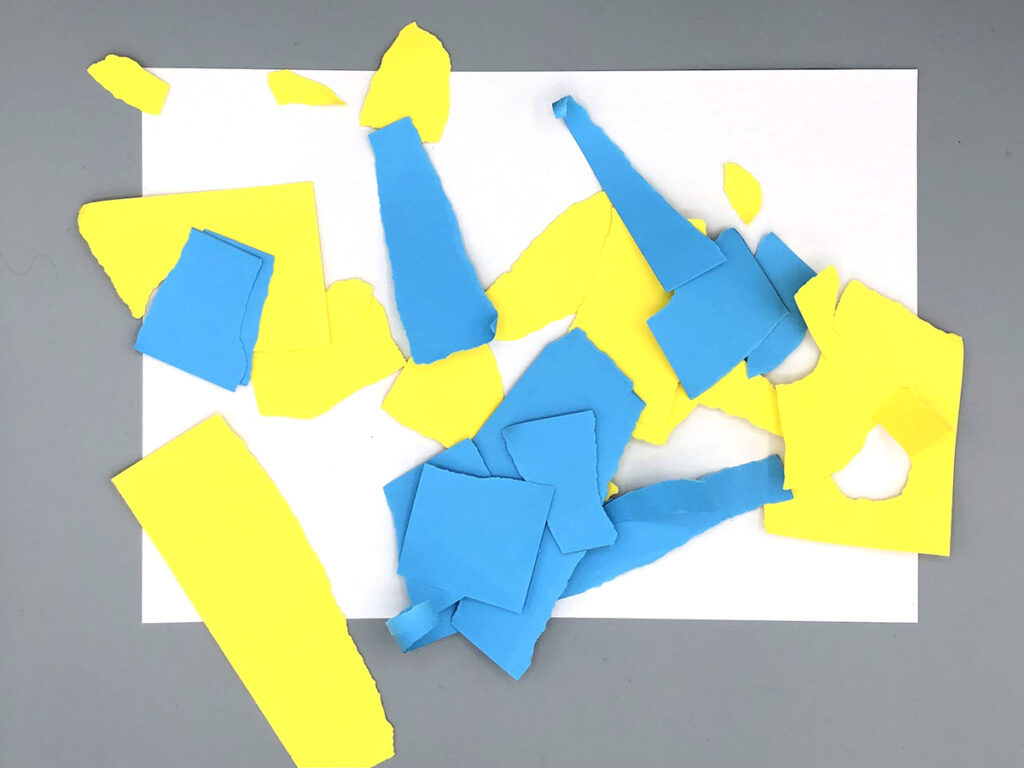
Suggested Materials: Offcuts of colored, scrap, or construction paper
Suggested Grade Levels: All
Procedures and Tips:
- Place a plain piece of white paper on the table.
- Take some colored paper and tear it up into smaller pieces. Take care not to crumple it.
Optional: Limit the number of torn pieces to 10.
Extension: Instead of colored paper, tear up old line drawings or linear illustrations. Use these as the premise for a new work of art to interpret. - Gather the torn pieces in one hand. Standing above the paper, sprinkle the pieces on the white paper.
- Accept the random position of each piece. Glue these into place where they have fallen.
- Reflect: Look at the collection of Torn Paper Collages.
Prompts: What does it feel like to give up control? What surprises did you experience?
Applications:
Torn Paper Collage requires students to be open to chance operations. Thus, this game works as a precursor to units where you want students to loosen up and let go of preconceived ideas.
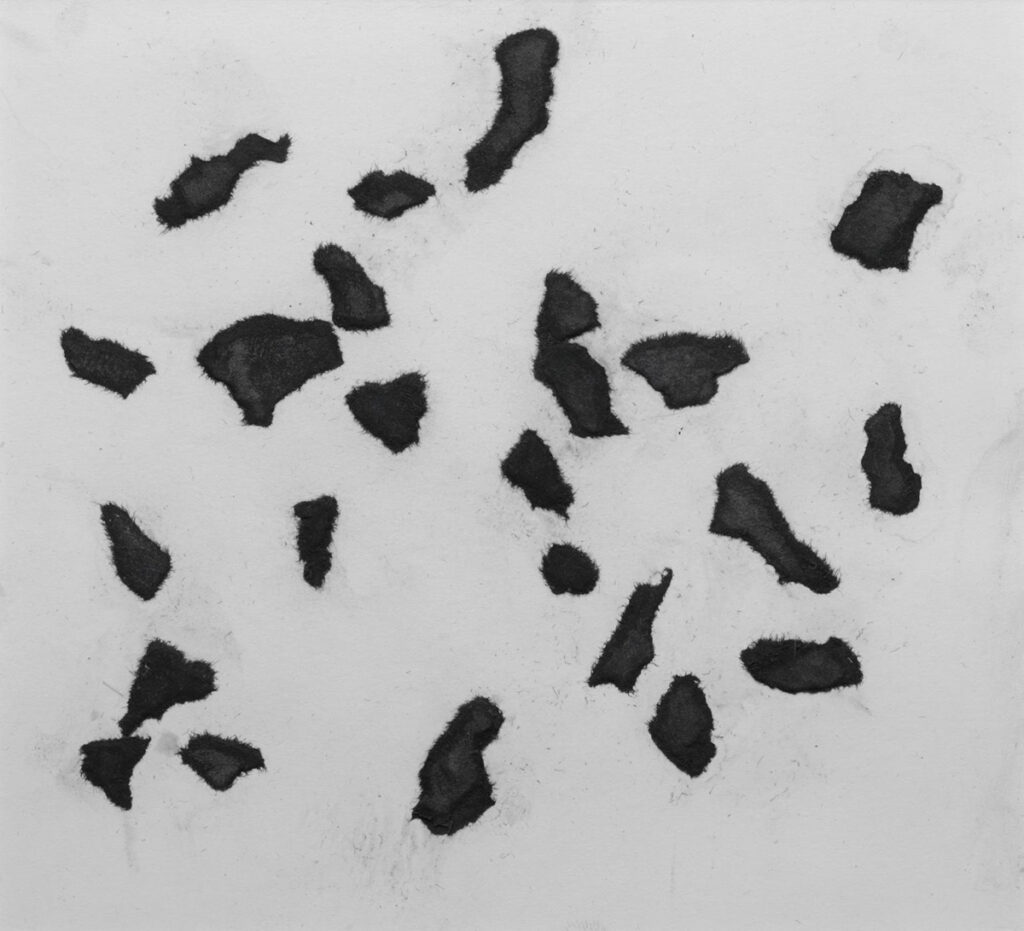
Grattage, Froissage, Sand Painting, Coulage, Photomontage, and the Paranoiac Critical Method were other games employed by the Surrealists. Students can play multiple Surrealist games over a series of lessons. You can also use these games to open up your student’s thinking, create opportunities for letting go, or stimulate the imagination. While older students may quickly grasp the historical connections to Surrealism, their younger counterparts might let go of control more easily. For this very reason, you should play these games at all levels!
How do you use the element of surprise in your classroom?
Where do you use humor in your classroom?
Which of these games could fit into your curriculum right now?
Magazine articles and podcasts are opinions of professional education contributors and do not necessarily represent the position of the Art of Education University (AOEU) or its academic offerings. Contributors use terms in the way they are most often talked about in the scope of their educational experiences.
